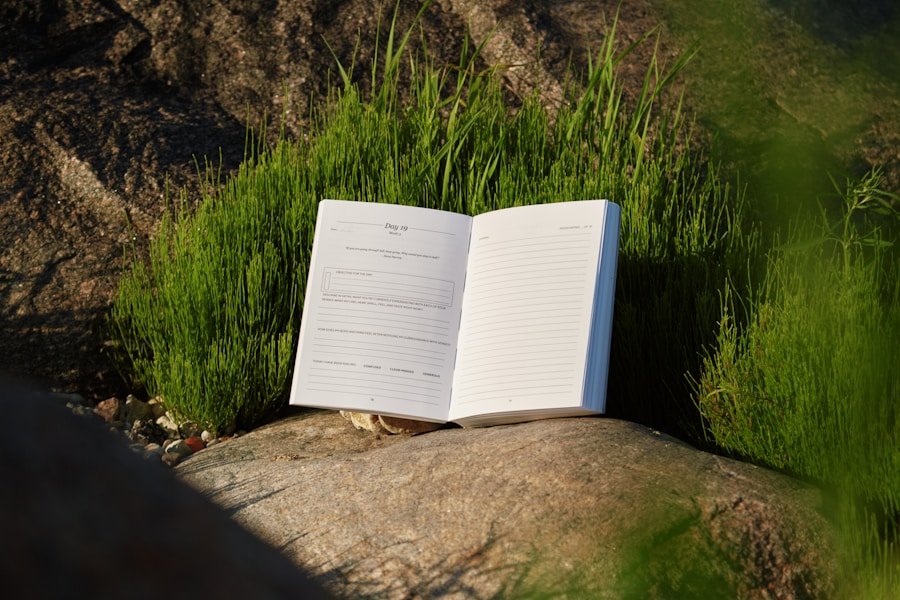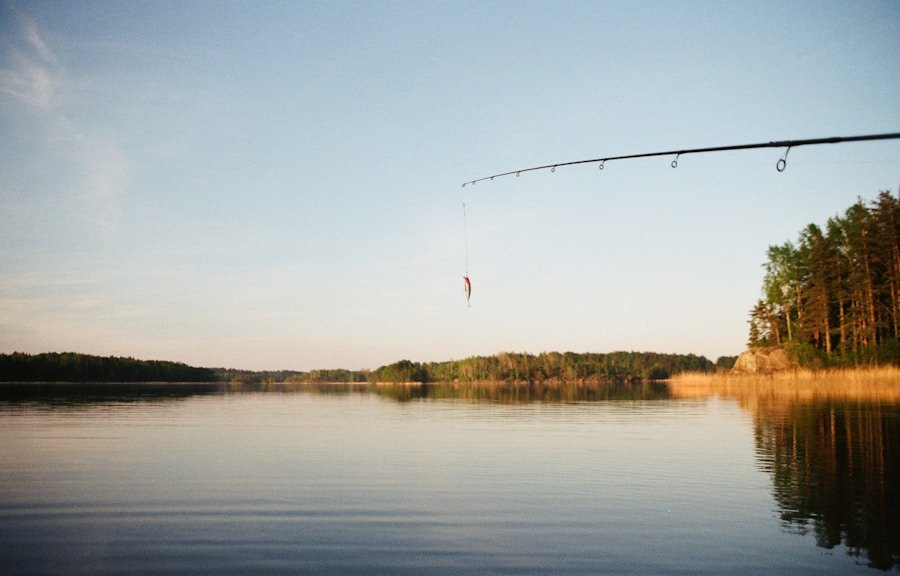Teaching survival skills to kids is an important and valuable endeavor that can have a lasting impact on their lives. By equipping children with essential survival skills, they are better prepared to handle unexpected situations and emergencies. These skills not only provide practical knowledge, but also instill a sense of confidence and self-reliance in children.
Additionally, learning survival skills can foster a deeper connection to nature and the environment, as children gain a greater understanding and appreciation for the natural world around them. By teaching kids survival skills in a fun and engaging way, they are more likely to retain the information and be excited about learning. Furthermore, teaching survival skills to kids can also help them develop important life skills such as problem-solving, critical thinking, and teamwork.
These skills are essential for navigating through various challenges and obstacles in life, and by introducing them at a young age, children are better equipped to handle adversity in the future. Additionally, learning survival skills can also help children develop a sense of resilience and adaptability, as they learn to overcome obstacles and thrive in challenging environments. Overall, teaching survival skills to kids can have a multitude of benefits that extend far beyond just practical knowledge.
Key Takeaways
- Teaching survival skills to kids builds resilience and confidence
- Engaging activities make learning survival skills fun and interactive
- Fire safety and building techniques are essential for survival in the wilderness
- Teaching kids to navigate and use tools in the wilderness is crucial for their safety
- Campfire classroom fosters teamwork and problem-solving skills in children
Engaging Activities for Teaching Survival Skills
When it comes to teaching survival skills to kids, it’s important to make the learning process fun and engaging. One way to do this is by incorporating hands-on activities that allow children to practice and apply their newfound knowledge in a practical setting. For example, setting up a mock campsite where kids can practice building shelters, starting fires, and purifying water can be an exciting and educational experience.
Additionally, organizing scavenger hunts or nature walks can help children learn how to identify edible plants, navigate through the wilderness, and observe wildlife in their natural habitat. Another engaging activity for teaching survival skills is to organize outdoor cooking sessions where kids can learn how to prepare food over an open flame using basic cooking techniques. This not only teaches children valuable cooking skills, but also reinforces the importance of fire safety and proper food handling in the wilderness.
By incorporating these engaging activities into the learning process, children are more likely to retain the information and develop a genuine interest in learning survival skills.
Importance of Fire Safety and Building Techniques
One of the most essential survival skills that kids should learn is fire safety and building techniques. Teaching children how to safely start and maintain a fire is crucial for staying warm, cooking food, and signaling for help in emergency situations. It’s important for kids to understand the potential dangers of fire and how to properly extinguish it to prevent wildfires.
Additionally, teaching kids how to build shelters using natural materials such as branches, leaves, and tarps can provide them with the knowledge and confidence to create a safe and secure shelter in the wilderness. Furthermore, teaching kids about the different types of shelters and their purposes, such as lean-tos, debris huts, and A-frame shelters, can help them understand the importance of shelter building in various environments. By emphasizing the importance of fire safety and building techniques, children can develop a strong foundation of survival skills that will serve them well in any outdoor setting.
Teaching Kids to Navigate and Use Tools in the Wilderness
| Skills Taught | Age Range | Duration |
|---|---|---|
| Fire Starting | 8-12 years old | 1 hour |
| Shelter Building | 10-14 years old | 1.5 hours |
| Wilderness First Aid | 12-16 years old | 2 hours |
Another important aspect of teaching survival skills to kids is helping them develop navigation skills and learn how to use tools in the wilderness. Teaching children how to read maps, use a compass, and navigate using natural landmarks can help them find their way if they ever become lost or disoriented in the wilderness. Additionally, teaching kids how to use basic tools such as knives, saws, and ropes can provide them with the necessary skills to build shelters, gather firewood, and create tools for survival.
Moreover, teaching kids about the importance of situational awareness and how to stay calm in emergency situations can help them make informed decisions and take appropriate action when faced with adversity. By teaching kids how to navigate and use tools in the wilderness, they are better prepared to handle unexpected situations and become more self-reliant in outdoor environments.
Building Resilience and Confidence in Children through Survival Skills
Teaching survival skills to kids can also help build resilience and confidence in children as they learn how to overcome challenges and thrive in outdoor environments. By teaching children how to adapt to changing conditions, problem-solve, and stay calm under pressure, they develop a sense of resilience that can serve them well in various aspects of their lives. Additionally, as children gain practical knowledge and experience in survival skills, they become more confident in their abilities to handle unexpected situations and emergencies.
Furthermore, by providing children with opportunities to practice their survival skills in a safe and controlled environment, they can develop a sense of self-reliance and independence that will benefit them throughout their lives. Building resilience and confidence in children through survival skills not only prepares them for outdoor adventures but also equips them with valuable life skills that can help them navigate through various challenges and obstacles.
Incorporating Nature and Environmental Education into Survival Lessons
Incorporating nature and environmental education into survival lessons is an important aspect of teaching kids about the natural world around them. By helping children develop a deeper understanding and appreciation for nature, they are more likely to become responsible stewards of the environment. Teaching kids about the importance of conservation, wildlife preservation, and Leave No Trace principles can help instill a sense of environmental responsibility from a young age.
Additionally, incorporating nature-based activities such as plant identification, wildlife observation, and nature journaling can help children develop a deeper connection to the natural world around them. By fostering a love for nature and environmental education through survival lessons, children are more likely to develop a lifelong passion for outdoor exploration and environmental conservation.
Fostering Teamwork and Problem-Solving Skills in Children through Campfire Classroom
One of the key benefits of teaching survival skills to kids is the opportunity to foster teamwork and problem-solving skills in children through the Campfire Classroom. By organizing group activities such as building shelters, starting fires, or navigating through the wilderness, children have the opportunity to work together towards a common goal. This not only helps children develop important teamwork skills but also teaches them how to communicate effectively, delegate tasks, and support one another in challenging situations.
Furthermore, by presenting children with real-life scenarios that require problem-solving and critical thinking skills, they have the opportunity to apply their knowledge in practical settings. This helps children develop a sense of resourcefulness and adaptability as they learn how to overcome obstacles and thrive in outdoor environments. Overall, fostering teamwork and problem-solving skills in children through the Campfire Classroom provides valuable opportunities for personal growth and skill development.
In conclusion, teaching survival skills to kids through the Campfire Classroom provides numerous benefits that extend far beyond just practical knowledge. By engaging children in fun and educational activities that teach essential survival skills such as fire safety, navigation, shelter building, and tool usage, they are better prepared to handle unexpected situations and emergencies. Additionally, by incorporating nature-based education into survival lessons, children develop a deeper connection to the natural world around them and become responsible stewards of the environment.
Furthermore, by fostering teamwork and problem-solving skills through group activities in the Campfire Classroom, children have the opportunity to develop important life skills that will serve them well throughout their lives. Overall, teaching survival skills to kids in a fun and engaging way provides valuable opportunities for personal growth, skill development, and a deeper appreciation for the natural world.
FAQs
What is the Campfire Classroom program?
Campfire Classroom is a program designed to teach essential survival skills to kids in a fun and engaging way. It aims to educate children on how to stay safe and confident in the outdoors through hands-on activities and interactive learning.
What are some of the essential survival skills taught in Campfire Classroom?
Some of the essential survival skills taught in Campfire Classroom include fire building, shelter construction, navigation, first aid, foraging for food, and basic wilderness safety.
How is the Campfire Classroom program structured?
The Campfire Classroom program is structured as a series of interactive workshops and outdoor activities. It is designed to be hands-on and engaging, allowing kids to learn through experience and practice.
Who can participate in the Campfire Classroom program?
The Campfire Classroom program is open to children of all ages, although the specific age range may vary depending on the program. It is often designed for kids who have an interest in outdoor activities and learning essential survival skills.
What are the benefits of participating in the Campfire Classroom program?
Participating in the Campfire Classroom program can help children develop confidence, resilience, and a sense of independence. It also teaches valuable life skills that can be useful in outdoor settings and emergency situations.













